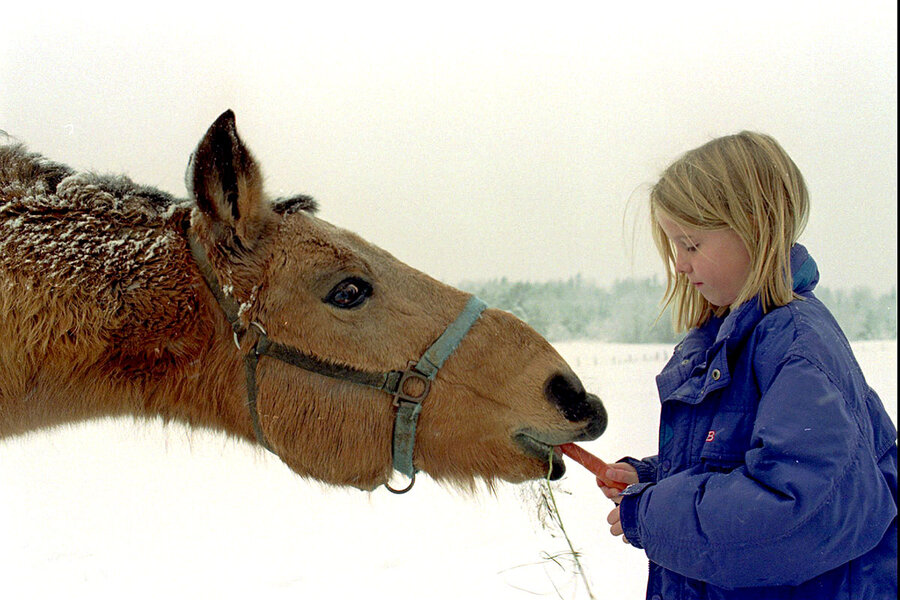Only the carrots were predictable
Loading...
The produce section of a local grocery isn’t designed to trigger emotion, but it does for me as I stroll past the bin with carrots. I don’t even like carrots, aside from a few raw gratings in a salad. But the sight of those bags I’d so often added to my cart tugs at me.
I have no idea what I’ve spent on carrots over the past few years, as I indulged the last two of my farm animals with almost daily rations of their favorite treat. My Belgian horse, Buck, and Brown Swiss milk cow, Nellie, shared a pasture on the 80 acres where Nellie had been born in 1998, a wee calf delivered by her mother, Jennifer, in the deep ravine of her choice. Buck arrived after a strenuous career working in harness on an Amish farm that was at auction. We’d locked eyes, and I bid on him. He took to his new home, lighter work, and the dairy herd with alacrity. That was some 15 years ago, and the farm has since changed hands.
But Buck and Nellie were welcomed to stay on. For the past few years, my aging animals, both fully retired and free to roam, were the only links to my former life as a dairy farmer. The other cows and five other draft horses had long since died. And now, Buck and Nellie are gone. Nellie lay down in the very ravine in which she’d been born, as if knowing it was the rightful place for another passage.
On New Year’s Eve I gave Buck, pasturing with the new farm owner’s beef cattle, a thorough currycombing so that he could enter the new year sleek and relatively clean. That was our last contact. (Yes, he’d gotten his carrots.)
Now my visits to the farm from my current home in town no longer carry any urgency to check on those two. I’ll still walk out there with my dog, who relishes the freedom of the open acreage. I’ll visit old haunts, pathways, nooks – that wide-open back pasture and the deeply shaded stream valley, where Buck and Nellie used to hunker down in the summer heat. It sometimes took me a couple of hours to track them down with my bag of carrots, because the valley is long and sinuous, and it wasn’t easy predicting how those two would plan their leisurely days.
It was never easy to predict anything that any of my animals would do, ever. They taught me how not to expect any semblance of routine. The cows had their own ideas of how any particular milking session would unfold: perhaps with perfect bovine decorum, perhaps with hoof-stamping confusion as a fourth animal shoved her way into the warmth of the three-stanchion parlor.
The horses in harness – all five that I worked with – understood “gee” and “haw” well enough, and generally complied with these and other commands – just not always including “whoa,” when their steam was up.
Our delightfully quirky goat, Cynthia, knew how to communicate with us via oval-eyed telepathy. One day she stared at me while I was at my leisure on the farmhouse porch until I gave up and came to her – to discover I’d left the pump tap on the water tank running and the farm lot was flooding. Who could have predicted that she’d know when something was wrong?
I cannot imagine having never known these creatures with their endlessly varied behaviors, or never having experienced their warmth on a winter’s day, or even their infuriating tendency to disappear into the brush just as I came looking for them – with carrots, no less.
It’ll take some time before I can walk past those carrots as if they were just another bin of produce. They provided so much: warm bovine and equine breath on a cold winter’s day, pricked ears at my approach, big footsteps behind me, and a nudge from Buck for more. I’d always have one carrot tucked in my pocket, for that parting bump was – uncharacteristically – always wholly predictable.





